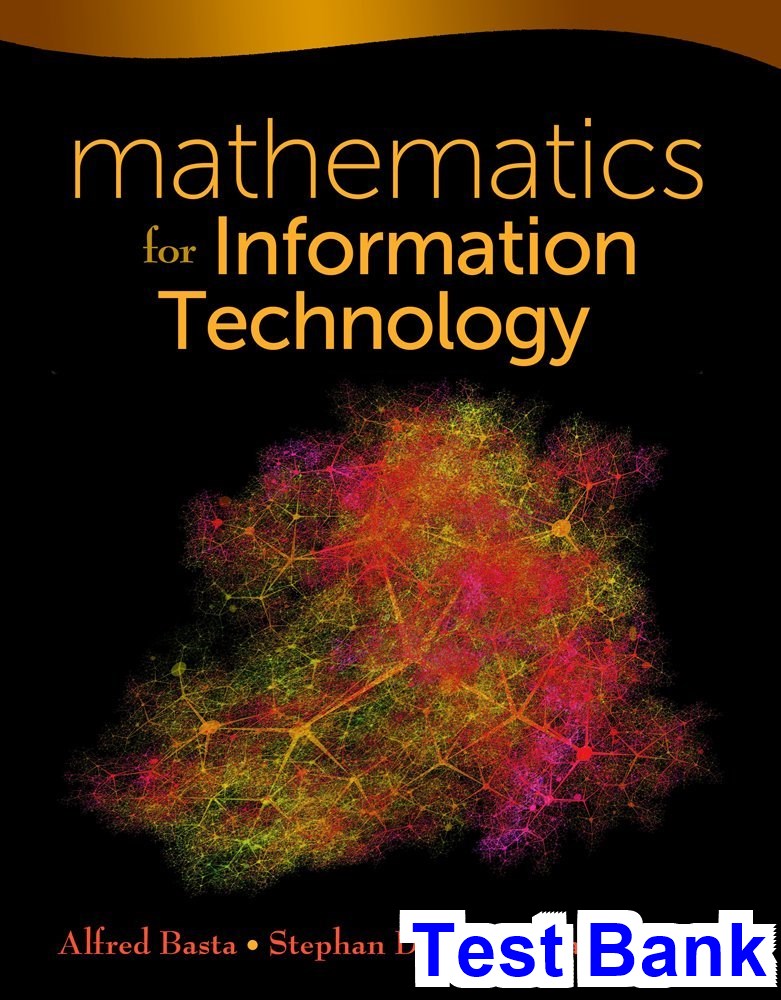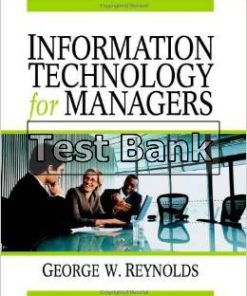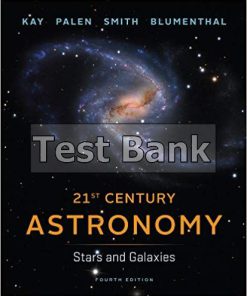Mathematics for Information Technology 1st Edition Basta Test Bank
$26.50$50.00 (-47%)
Mathematics for Information Technology 1st Edition Basta Test Bank.
You may also like
This is completed downloadable of Mathematics for Information Technology 1st Edition Basta Test Bank

Product Details:
- ISBN-10 : 1111127832
- ISBN-13 : 978-1111127831
- Author: Alfred Basta, Stephan DeLong, Nadine Basta
MATHEMATICS FOR INFORMATION TECHNOLOGY 1E delivers easy-to-understand and balanced mathematical instruction. Each chapter begins with an application, goes on to present the material with examples, and closes with a summary of the relevant concepts and practice exercises. With numerous illustrations included as well, readers can understand the content from a number of different angles. Whether used in a classroom or an online distance-learning format, readers will find Mathematics for Information Technology an invaluable resource.
Table of Content:
- Ch 1: Sets
- Introduction
- Objectives
- 1.1 Set Concepts
- 1.2 Subsets
- 1.3 Venn Diagrams
- 1.4 Applications of Sets
- 1.5 Infinite Sets
- Summary
- Glossary
- End-of-Chapter Problems
- Ch 2: Logic
- Introduction
- Objectives
- 2.1 Statements and Logical Connectives
- 2.2 Truth Tables for Negation, Conjunction, and Disjunction
- 2.3 Truth Tables for the Conditional and the Biconditional
- 2.4 Equivalent Statements
- 2.5 Symbolic Arguments
- 2.6 Euler Diagrams and Syllogistic Arguments
- Summary
- Glossary
- End-of-Chapter Problems
- Ch 3: Binary and Other Number Systems
- Introduction
- Objectives
- 3.1 The Decimal Number System
- 3.2 The Binary Number System
- 3.3 The Hexadecimal Number System
- 3.4 The Octal Number System
- 3.5 Binary and 8421 Codes
- Summary
- Glossary
- End-of-Chapter Problems
- Ch 4: Straight-Line Equations and Graphs
- Introduction
- Objectives
- 4.1 The Basics of the Cartesian Plane
- 4.2 Lines in the Plane
- 4.3 The Equation of a Straight Line
- 4.4 Solving a System of Linear Equations
- Summary
- Glossary
- List of Equations
- End-of-Chapter Problems
- Ch 5: Solving Systems of Linear Equations Algebraically and with Matrices
- Introduction
- Objectives
- 5.1 Solving Systems of Linear Equations by the Substitution Method
- 5.2 Solving Systems of Equations Using the Method of Elimination
- 5.3 Substitutions That Lead to Systems of Linear Equations
- 5.4 Introduction to Matrices
- 5.5 Using Matrices to Solve Systems of Linear Equations
- Summary
- Glossary
- End-of-Chapter Problems
- Ch 6: Sequences and Series
- Introduction
- Objectives
- 6.1 Sequences and Summation Notation
- 6.2 Arithmetic Sequences
- 6.3 Geometric Sequences
- 6.4 The Principles of Mathematical Induction
- 6.5 The Binomial Theorem
- Summary
- Glossary
- End-of-Chapter Problems
- Ch 7: Right-Triangle Geometry and Trigonometry
- Introduction
- Objectives
- 7.1 Measuring an Angle
- 7.2 Trigonometric Functions
- 7.3 Right Triangles
- Summary
- Glossary
- End-of-Chapter Problems
- Ch 8: Trigonometric Identities
- Introduction
- Objectives
- 8.1 Introduction to Trigonometric Identities and Trigonometric Functions
- 8.2 More Trigonometric Identities: Sums and Differences of Angles, Double Angles, Half Angles, and t
- 8.3 Verification of Further Identities
- Summary
- Glossary
- List of Equations
- End-of-Chapter Problems
- Ch 9: The Complex Numbers
- Introduction
- Objectives
- 9.1 Defining the Complex Numbers
- 9.2 Algebraic Operations with Complex Numbers
- 9.3 Graphical Representation of a Complex Number
- 9.4 Other Forms of Complex Numbers: Polar, Trigonometric, and Exponential
- 9.5 Applications of Complex Numbers
- Summary
- Glossary
- End-of-Chapter Problems
- Ch 10: Vectors
- Introduction
- Objectives
- 10.1 Vectors and Their Representation
- 10.2 Resolution of Vectors
- 10.3 The Resultant of Two Vectors
- 10.4 Applications of Vectors
- Summary
- Glossary
- End-of-Chapter Problems
- Ch 11: Exponential and Logarithmic Equations
- Introduction
- Objectives
- 11.1 Exponential Functions
- 11.2 Logarithms
- 11.3 The Properties of Logarithms
- 11.4 Exponential and Logarithmic Equations
- Summary
- Glossary
- List of Equations
- End-of-Chapter Problems
- Ch 12: Probability
- Introduction
- Objectives
- 12.1 Basics of Probability
- 12.2 Odds
- 12.3 Expected Value
- 12.4 “And” and “Or” Problems and Conditional Probability
- Summary
- Glossary
- End-of-Chapter Problems
- Ch 13: Statistics
- Introduction
- Objectives
- 13.1 The Different Techniques of Sampling
- 13.2 Statistical Graphs
- 13.3 The Measures of Central Tendency
- 13.4 The Measures of Dispersion
- 13.5 The Normal Distribution
- 13.6 The Binomial Distribution
- 13.7 Linear Correlation and Regression
- Summary
- Glossary
- List of Equations
- End-of-Chapter Problems
- Ch 14: Graph Theory
- Introduction
- Objectives
- 14.1 Graphs, Paths, and Circuits
- 14.2 Euler Paths and Euler Circuits
- 14.3 Hamiltonian Paths and Circuits
- 14.4 Trees
- Summary
- Glossary
- End-of-Chapter Problems
- Glossary
- Index
- Appendix: Answers to Odd-Numbered Chapter Exercises
People Also Search:
mathematics for information technology basta
mathematics for information technology 1st edition basta
mathematics for information technology 1st edition
mathematics for information technology 1st edition download scribd
mathematics for information technology 1st edition testbank download pdf












